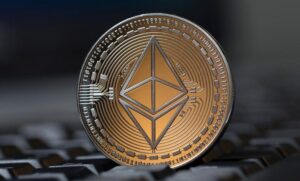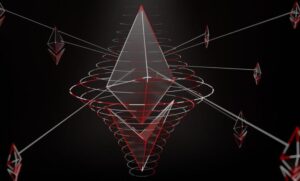
China, officially known as the People’s Republic of China, is a vast and diverse country located in East Asia. With a population of over 1.4 billion people, it is the most populous country in the world. China has a long and rich history, dating back thousands of years, and has made significant contributions to art, culture, science, and technology. In this article, we will explore a wide range of facts about China, covering its history, geography, government, economy, culture, and more.
Historical Background:
China has one of the world’s oldest recorded histories, with evidence of human habitation dating back to ancient times. The earliest dynasties, such as the Xia, Shang, and Zhou, laid the foundation for Chinese civilization. The Qin Dynasty, which ruled in the third century BCE, is known for unifying China and building the Great Wall. The Han Dynasty (206 BCE-220 CE) is considered a golden age of Chinese culture and saw the spread of Confucianism.
Imperial China:
China’s imperial era spanned over two thousand years, with various dynasties ruling the country. The Tang Dynasty (618-907) is known for its prosperity and cultural achievements, including advancements in poetry, painting, and ceramics. The Song Dynasty (960-1279) witnessed significant developments in science, technology, and trade. The Ming Dynasty (1368-1644) oversaw the construction of iconic landmarks such as the Forbidden City and the Ming Great Wall.
The Silk Road:
China played a central role in the ancient Silk Road, an extensive network of trade routes connecting Asia, Europe, and Africa. The Silk Road facilitated the exchange of goods, ideas, and cultures between civilizations, contributing to economic growth and cultural exchange in China and beyond.
Great Wall of China:
The Great Wall of China is one of the most iconic landmarks in the world. Stretching over 13,000 miles (21,196 kilometers), it was originally built as a defensive structure to protect against invasions from the north. Construction of the wall began over 2,000 years ago and continued throughout different dynasties.
The Forbidden City:
Located in the heart of Beijing, the Forbidden City is an imperial palace complex that served as the residence of Chinese emperors for nearly 500 years. It is a remarkable architectural masterpiece and a UNESCO World Heritage site. The Forbidden City is renowned for its intricate design, palatial buildings, and extensive collection of ancient artifacts.
Terracotta Army:
The Terracotta Army is a world-famous archaeological discovery located near the city of Xi’an. Discovered in 1974, it consists of thousands of life-sized terracotta sculptures depicting soldiers, horses, and chariots. The Terracotta Army was created to accompany the first emperor of China, Qin Shi Huang, in the afterlife.
Three Gorges Dam:
The Three Gorges Dam is the world’s largest hydropower project and a symbol of China’s engineering prowess. Located on the Yangtze River, it provides electricity, flood control, and navigation benefits. The construction of the dam involved the relocation of millions of people and the flooding of archaeological sites.
Modern China:
In 1949, the Communist Party of China, led by Chairman Mao Zedong, established the People’s Republic of China. This marked the beginning of a new era for China, with significant political, social, and economic changes taking place. The Chinese government implemented various policies, including the Great Leap Forward and the Cultural Revolution, which had profound impacts on the country and its people.
One-Child Policy:
In the late 1970s, China implemented the one-child policy as a means to control population growth. The policy restricted most couples to having only one child, with exceptions for certain circumstances. It aimed to alleviate the strain on resources and promote economic development. While the policy was effective in reducing population growth, it also led to unintended consequences, such as gender imbalance and demographic challenges. In recent years, China has relaxed the one-child policy and implemented a two-child policy to address these issues.
Economic Reforms and Growth:
China embarked on a series of economic reforms and liberalization policies in the late 1970s, transitioning from a centrally planned economy to a more market-oriented system. These reforms, spearheaded by Deng Xiaoping, opened up China to foreign investment and trade, leading to unprecedented economic growth. China’s economy has experienced rapid development, becoming the world’s second-largest economy and a major global player in trade and manufacturing.
Special Economic Zones:
To attract foreign investment and promote economic development, China established special economic zones (SEZs) in select regions. These zones, such as Shenzhen, Shanghai, and Tianjin, offer preferential policies, tax incentives, and streamlined regulations to encourage business growth and innovation. SEZs have played a significant role in China’s economic transformation and have become thriving centers of industry and commerce.
Belt and Road Initiative:
China’s Belt and Road Initiative (BRI), also known as the New Silk Road, is a global infrastructure development and investment project. It aims to enhance connectivity and promote economic cooperation between China and countries in Asia, Europe, Africa, and beyond. The BRI encompasses the construction of railways, ports, highways, and other infrastructure projects, fostering trade, investment, and cultural exchange.
High-Speed Rail Network:
China has built the world’s largest high-speed rail network, connecting major cities across the country. With state-of-the-art technology and speeds exceeding 186 mph (300 km/h), the high-speed rail system has revolutionized transportation in China, providing efficient, convenient, and comfortable travel options.
Space Exploration:
China has made significant advancements in space exploration. It became the third country to independently launch humans into space with the Shenzhou spacecraft. The country has also successfully landed robotic missions on the Moon and Mars, and has plans for a permanent space station. China’s space program reflects its ambition to become a global leader in scientific and technological innovation.
Traditional Chinese Medicine:
Traditional Chinese Medicine (TCM) is a holistic medical system that has been practiced for thousands of years. It encompasses various practices, including herbal medicine, acupuncture, and qigong. TCM is deeply rooted in Chinese culture and philosophy, emphasizing the balance of Qi (life force) for overall health and well-being.
Chinese Cuisine:
Chinese cuisine is renowned worldwide for its diversity, flavors, and culinary techniques. Each region in China has its own distinct culinary traditions and specialties. Popular dishes include Peking duck, Kung Pao chicken, dim sum, hot pot, and various noodle and rice-based dishes. Chinese cuisine has greatly influenced global culinary trends, with Chinese restaurants found in nearly every corner of the world.
Martial Arts:
China is the birthplace of martial arts, with a rich heritage of ancient fighting styles. Martial arts practices, such as Kung Fu, Tai Chi, and Wing Chun, emphasize discipline, self-defense, and spiritual development. These practices have gained popularity globally, attracting practitioners who seek physical fitness, mental clarity, and personal growth.
Festivals and Celebrations:
China is known for its vibrant and elaborate festivals and celebrations. The Lunar New Year, also known as Chinese New Year, is the most important festival, marked by dragon dances, lantern festivals, and fireworks. Other significant celebrations include the Mid-Autumn Festival, Dragon Boat Festival, and Qing Ming Festival. These festivals are characterized by colorful traditions, cultural performances, and special culinary delights, providing a glimpse into China’s rich cultural heritage.
Calligraphy and Painting:
Chinese calligraphy and painting have a long-standing tradition and are highly regarded as forms of art and cultural expression. Calligraphy is the artistic writing of Chinese characters, emphasizing brushwork, composition, and aesthetics. Chinese painting, known for its delicate brushstrokes and use of ink and watercolor, often depicts landscapes, nature, and traditional motifs.
UNESCO World Heritage Sites:
Internet and Technology:
China has a massive and rapidly expanding internet and technology sector. Chinese companies such as Alibaba, Tencent, and Huawei are at the forefront of innovation in e-commerce, social media, mobile payment systems, and telecommunications. China’s digital landscape, including popular platforms like WeChat and Alipay, has transformed the way people communicate, shop, and conduct business.
Environmental Challenges and Conservation Efforts:
China faces various environmental challenges, including air pollution, deforestation, and water scarcity. However, the country has made significant efforts to address these issues and promote environmental sustainability. China has implemented strict emission controls, invested in renewable energy sources, and launched large-scale afforestation programs. It is also actively involved in international efforts to combat climate change.
Ethnic Diversity:
China is home to a diverse range of ethnic groups, with the Han Chinese being the majority. In addition to the Han, there are 55 officially recognized ethnic minority groups, including the Tibetans, Uighurs, Zhuang, Hui, and Mongols, each with their distinct languages, customs, and traditions. This ethnic diversity contributes to China’s multicultural fabric and enriches its cultural heritage.
Social and Human Rights Challenges:
China’s rapid development has been accompanied by social and human rights challenges. Issues such as income inequality, labor rights, freedom of expression, and ethnic tensions have been subject to ongoing discussions and debates. The Chinese government’s approach to these challenges and its human rights record have been a topic of international concern and scrutiny.
Global Influence and Diplomacy:
China’s growing economic and political influence has positioned it as a major player on the global stage. The country actively engages in diplomacy, participates in international organizations, and promotes multilateralism. China’s Belt and Road Initiative, as well as its economic partnerships and investments abroad, contribute to its expanding global influence and presence.
In conclusion, China is a country of immense diversity, rich history, and remarkable achievements. From its ancient civilization to its modern-day advancements, China continues to shape the world in numerous ways. Its cultural heritage, technological innovation, economic growth, and global engagement make it a fascinating and influential nation on the global stage.






